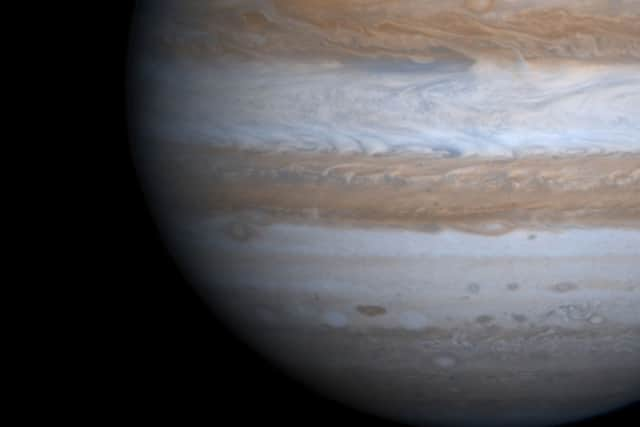How to see Jupiter’s closest approach in Sheffield - Met Office weather forecast for tonight’s spectacle
and live on Freeview channel 276
Stargazers in Sheffield are in for a treat tonight as Jupiter is expected to make its closest approach to earth in the last 59 years - which could result in “extraordinary views”.
Space experts NASA say the gas giant is due to ‘reach opposition’ which is when Jupiter rises in the east, with the sun setting in the west - which puts them on opposite sides of Earth.
Advertisement
Hide AdAdvertisement
Hide AdThis positioning will make the largest planet in the solar system appear bigger and brighter in the night sky and because Jupiter’s closest approach to Earth hardly ever coincides with opposition, experts at Nasa say this year’s views will be ‘extraordinary.’


This opposition occurs every 13 months but, because the planets do not orbit the sun in perfect circles, they pass each other at varying distances so it’s rare for Jupiter to be so near Earth.
It is predicted that tonight, the fifth planet from the sun will come closer to earth than it has done in almost six decades - a distance of just 367 million miles away.
And while that still seems quite a stretch, to put it into perspective, at its farthest point it can be as much as 600 million miles away.
Advertisement
Hide AdAdvertisement
Hide AdJupiter’s closest approach in Sheffield - how to watch
The best spot for getting a good view of the celestial phenomenon is somewhere high, dark and dry, according to NASA experts.
When you have found your ideal location, look to the eastern horizon around sunset and you should be able to see the planet with the naked eye - not including the moon, Jupiter is likely to appear as the brightest object in the sky.
Although the Met Office predicts cloud throughout the day in Sheffield, and rain overnight - don’t let the weather put you off - it is expected that the gas giant will be easily visible to the naked eye all month long - so if you don’t catch a glimpse tonight, keep your eyes peeled for the next few weeks.
Research astrophysicist at NASA’s Marshall Space Flight Center, Adam Kobelski, said: “With good binoculars, the banding (at least the central band) and three or four of the Galilean satellites (moons) should be visible.
“It’s important to remember that Galileo observed these moons with 17th-century optics. One of the key needs will be a stable mount for whatever system you use.”
Comment Guidelines
National World encourages reader discussion on our stories. User feedback, insights and back-and-forth exchanges add a rich layer of context to reporting. Please review our Community Guidelines before commenting.
